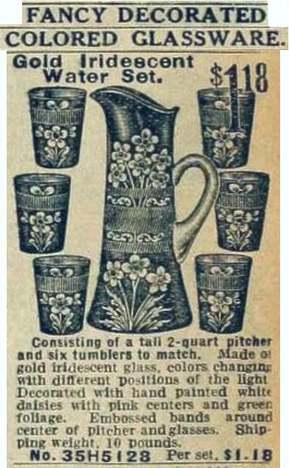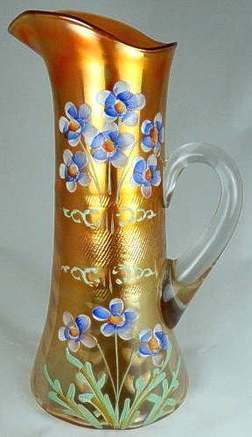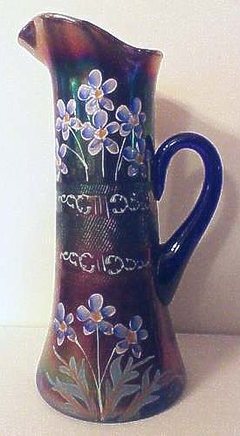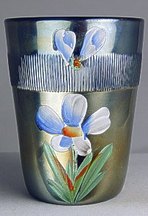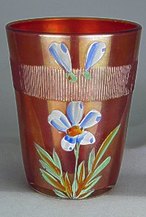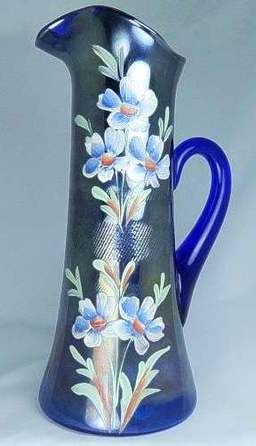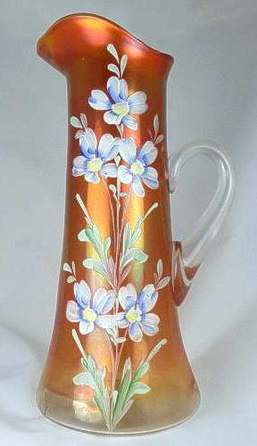Carnival Glass ads: Sears Roebuck Catalogue 1912
The wonderful Sears catalogue ads used on our Sears Roebuck feature pages are courtesy and copyright of Phil Prince.
Phil's passion for the glass lead him to these amazing advertisements, which will be of great interest to current and
future collectors of the iridescent ware we call Carnival Glass. We are extremely grateful for his permission to use them.
Spring 1912
In the Sears Fall 1910 catalogue, we saw the appearance of enamelled / decorated Carnival Glass from the Dugan factory. But they were not the only Carnival Glass makers to use this technique, as both Fenton and Northwood were also significant producers.
In the Spring 1912 catalogue we see this lovely ad for "Fancy Decorated Colored Glassware", which was made by Fenton. The pattern was originally described in the ad as "hand painted white daisies with pink centres", but it has become known to collectors as Enamelled Forget-Me-Not.
When the Sears ad (above) was posted on our Carnival Glass Facebook page, we had a lot of very positive comments, including an amazing response from Steve Ellwein who sent the picture of the amazing blue Forget-Me-Not with Prism Band and the scroll decoration - it came from the Fenton Musuem auction, and to have been in the museum, it must have had special significance to the Fentons. What a great item!
Other versions
There are more versions of this pattern, both of the decoration itself, and also the "blank" tankard-shaped pitcher that it was painted on.
Shown below are two further examples, neither of which have the horizontal scroll decoration like the one in the Sears catalogue. The blue one in the centre below, uses the Prism Band blank (the band of moulded, slanting lines around the pitcher), and there are fewer flowers. The marigold pitcher on the right uses a plain blank (no Prism Band), and instead there is a pattern of leaves. Again, fewer flowers, but here the flower centre is yellow.
The tumblers that go with the pitchers are usually the Prism Band variety as shown below left, in blue and marigold, but there is also a rarer un-banded version.
Why the differences?
These decorated Carnival Glass items were all painted by hand. The decorators, usually women, followed a template - an example that had already been decorated, that they were to copy - but inevitably and as you would expect, they each had their own style. The result was many different interpretations of the template: some (frankly) look like a daub with a thick brush, whereas others are finely and delicately painted. So ... there is a lot of variation.
The applied decoration was done using finely ground glass, which took a tremendous amount of skill. It was then fired on - this has made the enamelling remarkably durable, but nevertheless, the decoration is easily damaged and the applied handles are particularly fragile! Sadly, the survival rate has undoubtedly been relatively low!
The decorating tradition was continued by Fenton.
Fenton carried on and developed the techniques used in decorating Carnival Glass when they started making Contemporary Carnival from the 1960s. The decorated pieces, especially "one of a kind" and artist-signed whimseys that Fenton made for various Carnival Glass collector clubs are very sought after pieces.
Back to Sell it to me! homepage.
See more Sears catalogues on the Sears Catalogues Homepage.
